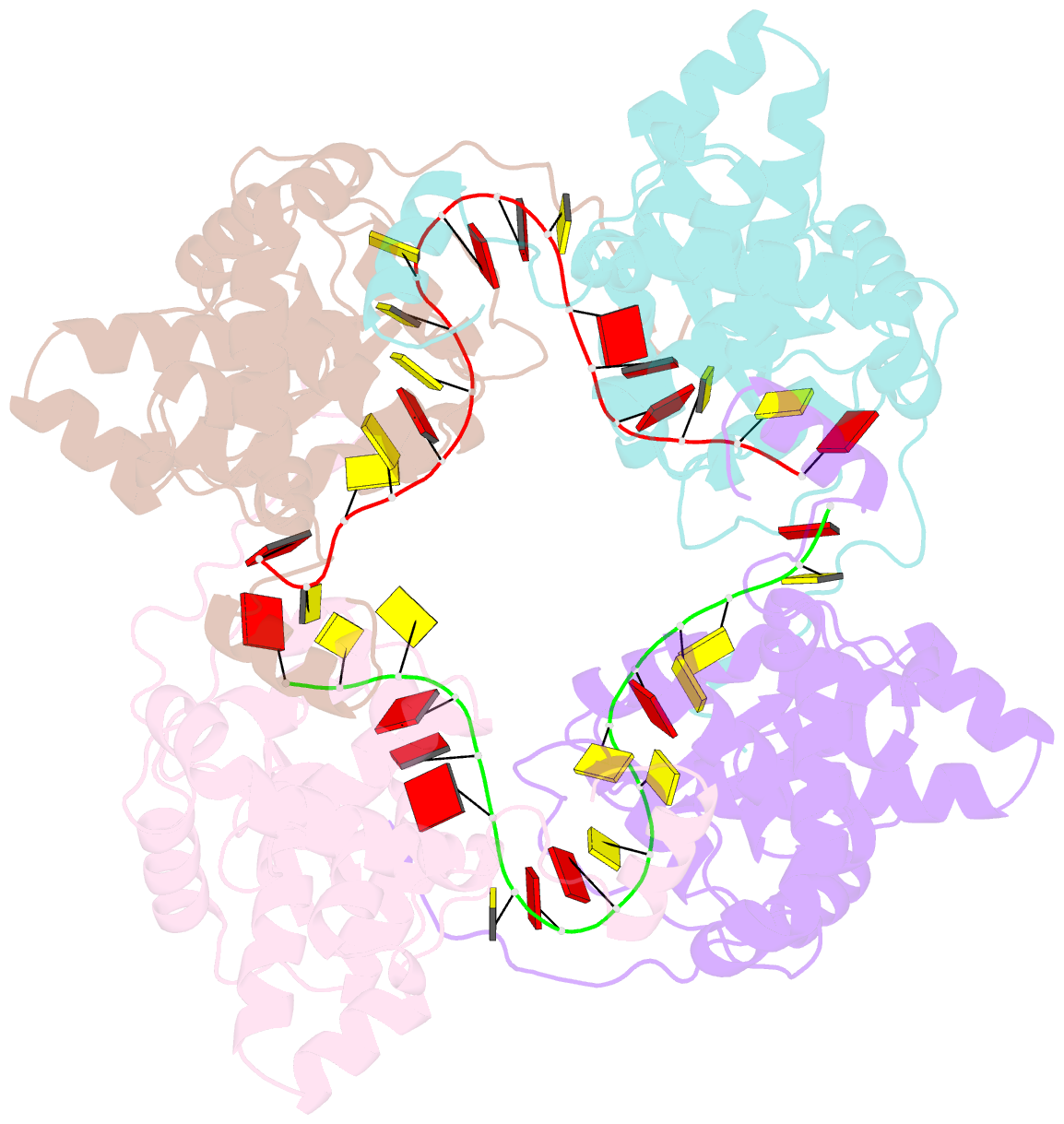Summary information and primary citation
- PDB-id
- 4j1j; SNAP-derived features in text and JSON formats;
DNAproDB
- Class
- viral protein-DNA
- Method
- X-ray (2.65 Å)
- Summary
- Leanyer orthobunyavirus nucleoprotein-ssDNA complex
- Reference
- Niu F, Shaw N, Wang YE, Jiao L, Ding W, Li X, Zhu P, Upur H, Ouyang S, Cheng G, Liu ZJ (2013): "Structure of the Leanyer orthobunyavirus nucleoprotein-RNA complex reveals unique architecture for RNA encapsidation." Proc.Natl.Acad.Sci.USA, 110, 9054-9059. doi: 10.1073/pnas.1300035110.
- Abstract
- Negative-stranded RNA viruses cover their genome with nucleoprotein (N) to protect it from the human innate immune system. Abrogation of the function of N offers a unique opportunity to combat the spread of the viruses. Here, we describe a unique fold of N from Leanyer virus (LEAV, Orthobunyavirus genus, Bunyaviridae family) in complex with single-stranded RNA refined to 2.78 Å resolution as well as a 2.68 Å resolution structure of LEAV N-ssDNA complex. LEAV N is made up of an N- and a C-terminal lobe, with the RNA binding site located at the junction of these lobes. The LEAV N tetramer binds a 44-nucleotide-long single-stranded RNA chain. Hence, oligomerization of N is essential for encapsidation of the entire genome and is accomplished by using extensions at the N and C terminus. Molecular details of the oligomerization of N are illustrated in the structure where a circular ring-like tertiary assembly of a tetramer of LEAV N is observed tethering the RNA in a positively charged cavity running along the inner edge. Hydrogen bonds between N and the C2 hydroxyl group of ribose sugar explain the specificity of LEAV N for RNA over DNA. In addition, base-specific hydrogen bonds suggest that some regions of RNA bind N more tightly than others. Hinge movements around F20 and V125 assist in the reversal of capsidation during transcription and replication of the virus. Electron microscopic images of the ribonucleoprotein complexes of LEAV N reveal a filamentous assembly similar to those found in phleboviruses.





